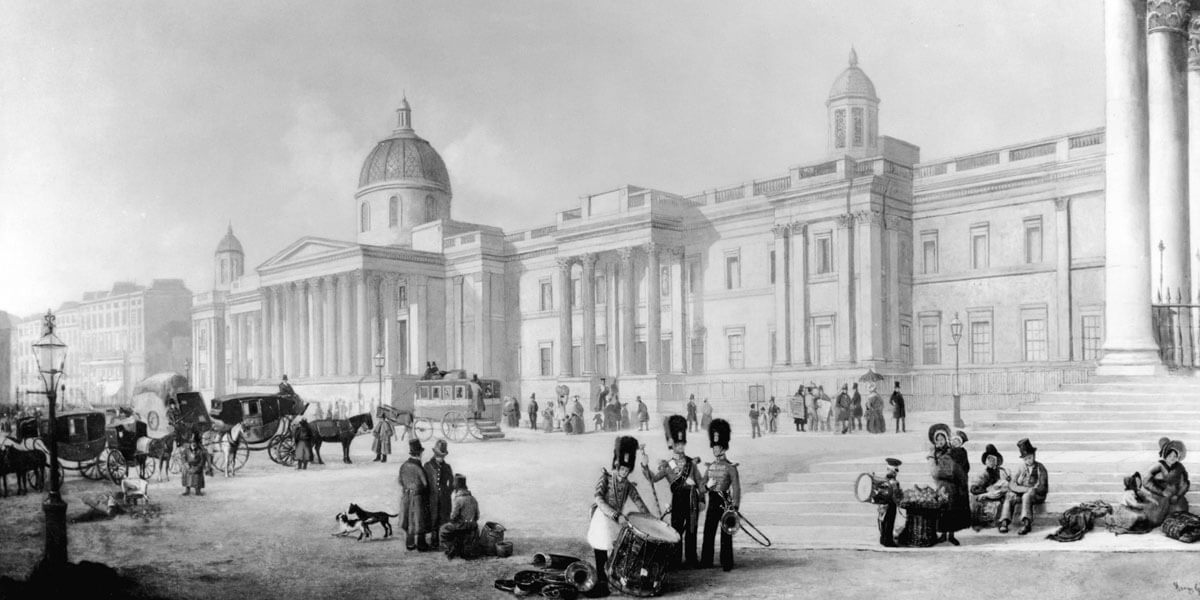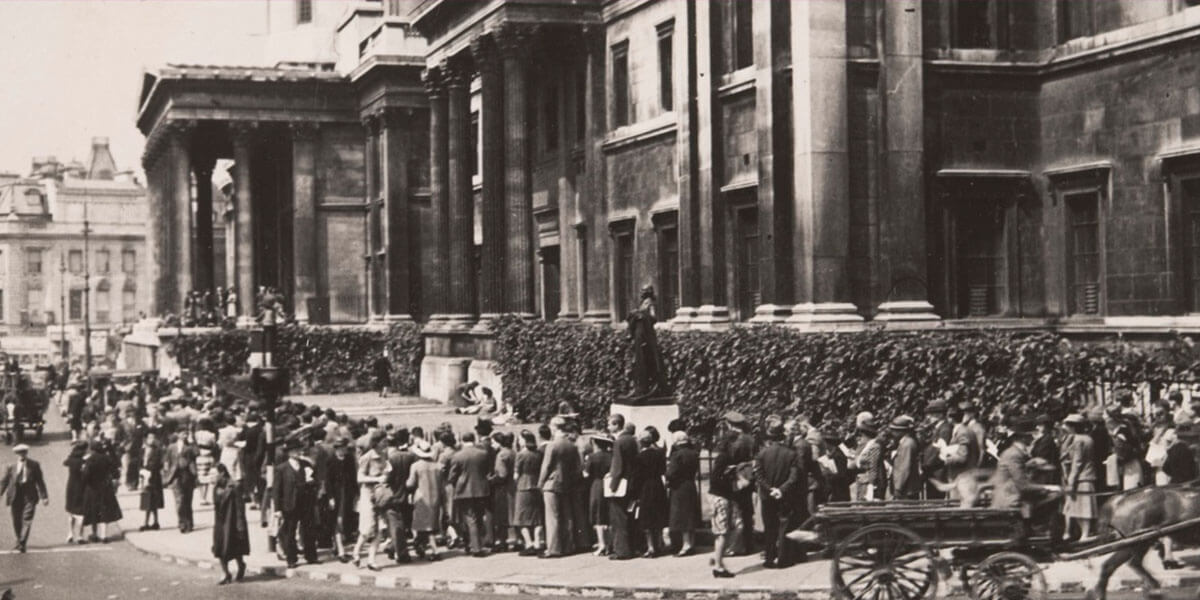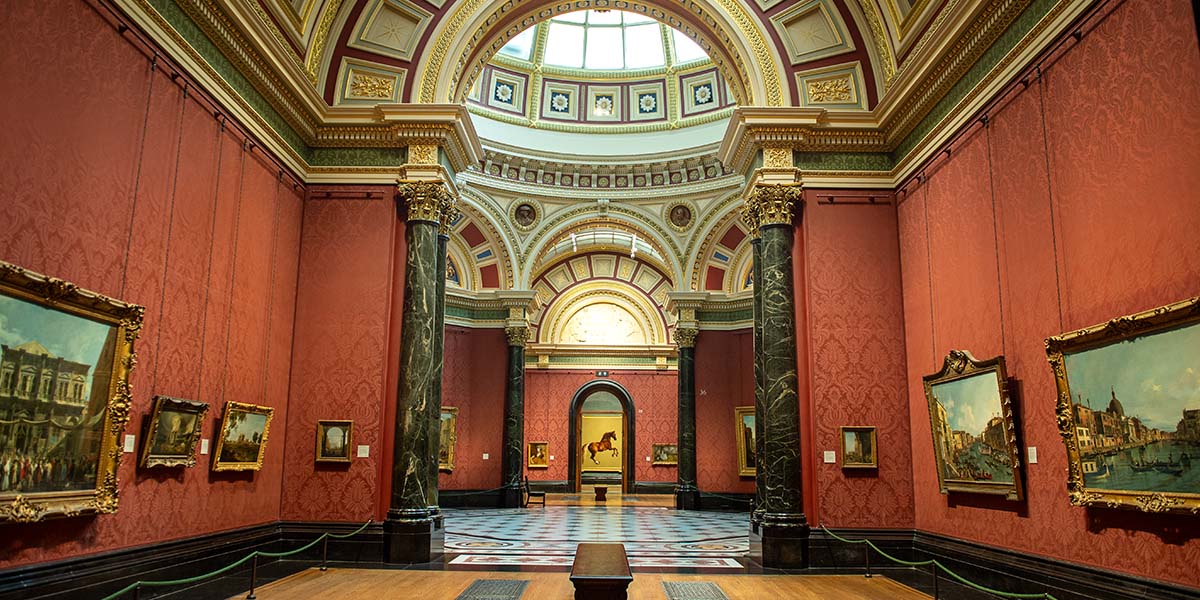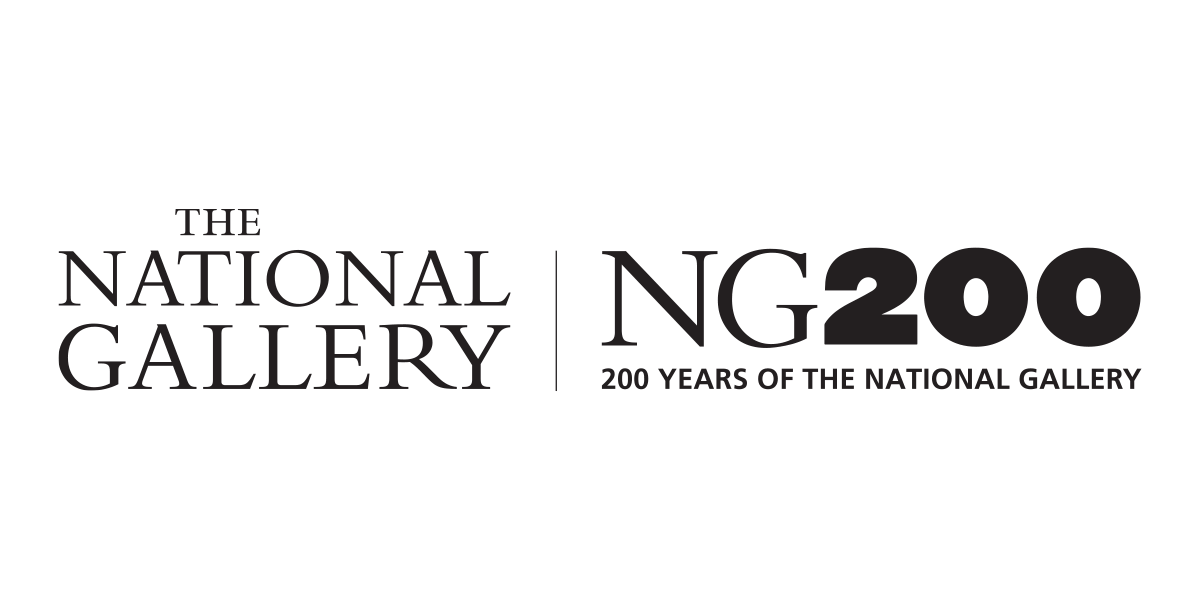The National Gallery presents a captivating narrative of painting in the Western tradition. Spanning 700 years of painting from the late 13th to the early 20th century, the Gallery has been an influential artistic hub for 200 years. The collection of over 2,300 paintings includes works by Bellini, Cézanne, Degas, Leonardo, Monet, Raphael, Rembrandt, Renoir, Rubens, Titian, Turner, Van Dyck, Van Gogh and Velázquez.
The National Gallery’s beginnings are modest compared to other prominent European museums. It was not founded on an extravagant collection housed in a royal palace but rather on the acquisition of a private collection of 38 paintings by parliament in 1824 for the benefit of the public. The collection previously belonged to John Julius Angerstein, a businessman and philanthropist, and the National Gallery was established in his former residence at 100 Pall Mall in London.

Underpinning its ethos to make art accessible, Trafalgar Square was chosen as the Gallery’s new location in 1838. Situated in what was considered the centre of London, Trafalgar Square was equally accessible to everyone from the East and West of London.
The National Gallery’s unmistakable presence on the north side of Trafalgar Square is marked by its Corinthian columns, repurposed stone sculptures from the Marble Arch and charming small domes. The building, designed by William Wilkins (1778 –1839), now reimagined by Edwina Ellis for a UK coin, opened in 1838 and housed both the National Gallery and the Royal Academy.
Ten years later, the Academy’s aspiring students and future Pre-Raphaelites, including Dante Gabriel Rossetti, William Holman Hunt and John Everett Millais, only needed to walk across the main entrance hall from east to west to view the collections.
Wilkins’ building provided several well-proportioned, top-lit rooms for picture display, but these quickly needed to be increased. The collection was growing dramatically in the middle decades of the nineteenth century.
In 1869, the Royal Academy moved out to its present location in Piccadilly, releasing the rooms on the east side of the building. Soon after, a new suite of eight grandiose rooms designed by Edward Middleton Barry was added to the rear of the building and opened in 1876.
In 1897, due to Henry Tate’s philanthropy, the Tate Gallery was established as an annexe of the National Gallery to showcase the collection of British paintings. By the turn of the century, the National Gallery had become a prominent art museum, on par with other great art museums in Europe.

In 1939, with the looming threat of aerial bombardment and another war with Germany, the valuable collection in London was evacuated. There was a proposal to take the pictures to Canada. However, Sir Winston Churchill wrote to the director of the Gallery, Kenneth Clark, instructing him to ‘bury them in the bowels of the Earth’ and declaring that ‘not a picture shall leave these islands’. As a result, the entire collection was moved to North Wales to the Manod slate mines. During this time, the Gallery staff took the opportunity to catalogue the pictures and restore several pieces.
During the Second World War, the National Gallery faced the challenge of keeping its doors open in London and engaging with the public. The renowned pianist Dame Myra Hess suggested to Kenneth Clark, the director of the Gallery, that musical concerts take place during weekdays in the Barry Rooms. The first concert was performed by Hess herself, and these performances continued until 1946. Additionally, there were curated exhibitions featuring works by living painters, including ‘War Artists’.
In 1942, Clark initiated the ‘Picture of the Month’ scheme, which involved displaying a single masterpiece from the collection at the top of the Gallery staircase for public viewing. At night, the artwork was taken into the vaults for protection. These efforts consolidated the bond between Londoners and the National Gallery during the war years, creating a sense of affection and appreciation for the Gallery’s role in the community.
In 1877, a year after the Barry Rooms opened their doors, more than 1.3 million visitors had already made their way to the National Gallery. From the late 1950s, the number of visitors exceeded a million each year, which has continued to grow steadily. After the inauguration of the Sainsbury Wing in 1991, the annual number of visitors exceeded 4 million. In 2014, more than 6 million people visited the Gallery, making it one of the most frequently visited museums in the world.

Whilst significant, the Gallery’s strategic placement in the heart of London only accounts for a portion of its popularity. Its extensive collection of paintings, free admission, diverse exhibitions and other activities have ensured its position as a highly coveted institution that successfully engages with the public. Approximately 280 million individuals have been estimated to have visited the National Gallery’s collection in Trafalgar Square throughout its 200-year existence.
In 2024, we proudly commemorate the National Gallery’s bicentenary with a commemorative coin featuring a reverse design by the talented designer, engraver and print maker Edwina Ellis. A testament to the enduring power of visual expression, certain editions of the coin feature the inspiring edge inscription ‘MAIORVM GLORIA POSTERIS LVMEN EST’, taken from the ceiling of the Wilkins Building, which translates to ‘The glory of our ancestors is a light to our descendants’ and a resounding affirmation that art remains an invaluable treasure for generations to come.


